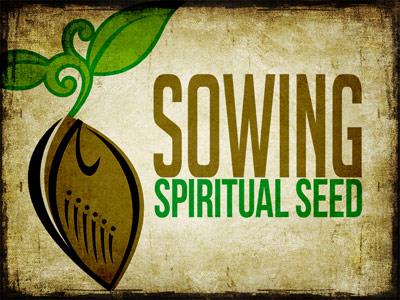-
The Poor Economics Of Sowing
Contributed by Jim Cunningham on Nov 28, 2017 (message contributor)
Summary: Looking at the Parable of the Sower as a true parable, rather than an allegory.
We are a bit past the growing season here in NJ. But the farmers’ markets are still booming with the harvest of seeds that were planted back in the spring. We have had extreme weather this year – first wet, then dry, with a miserable heat wave in the middle. I’m not sure it has been a bumper year for farmers. But despite the weather, which they cannot control, there are a few things that farmers CAN do to ensure a good harvest.
I’m a novice at such things. Sonya and Marge can help us with the whole planting endeavor, but I need to read the directions to be successful. You might think that the directions for gardening might be pretty simple. Plant, water, and harvest. Someone once sent me a compilation of directions found on some common household products. I think they’re funny enough to share with you this morning:
Pop tarts: Remove from pouch. Place pastry in toaster. Toast.
Rowenta Iron: Do not iron clothes on body.
American Airlines packet of nuts: Open package. Eat nuts.
Swedish chainsaw: Do not attempt to stop chain with your hands.
Package of Spencer Bread Pudding: Product will be hot after heating.
Boots’ Children’s cough syrup: Do not drive a car or operate machinery.
So how hard can it be to get a good harvest? Jesus gives us some instructions here in Mark 4. Or, maybe he doesn’t. I want us to take a closer look at this parable. Because I think there’s much more here than meets the eye. It just might be that the point of this parable might be quite different than you might think.
Every paragraph heading in every Bible tells us that this is a parable. This passage is quite well known as the “Parable of the Sower”. But herein begins our problem. The way 99% of Christians interpret this passage is not as a parable, but as an allegory. What’s the difference?
A parable is defined as “a short simple story intended to illustrate a moral or religious lesson.” While an allegory is “a work in which the characters and events are to be understood as representing other things and symbolically expressing a deeper, often spiritual, moral, or political meaning.” What’s the practical difference?
In a parable, you look for one central point. It is usually not important what the component parts are. There is one central truth that is being communicated. On the other hand, with an allegory, you have many levels of meaning. Each part of the story may represent something different. It is much more complex than a parable.
Here’s an example of a non-biblical parable:
Once upon a time there was a wise man who used to go to the ocean to do his writing. He had a habit of walking on the beach before he began his work. One morning he was walking along the shore. As he looked down the beach, he saw a boy reaching down to the shore, picking up something and very gently throwing it into the ocean. As he got closer he called out,"Good morning! What are you doing?" The young man paused, looked up and replied, "Throwing starfish in the ocean." The man asked, “Why are you throwing starfish in the ocean?" The boy said, "The sun is up and the tide is going out. And if I don’t throw them in they’ll die." The man said, "But, my boy, don’t you realize that there are miles and miles of beach and starfish all along it. You can’t possibly make a difference!" The boy listened politely. Then bent down, picked another starfish and threw it into the sea, past the breaking waves and said, "It made a difference for that one."
So what’s the point? (ask) Little acts of kindness can make a big difference, even if the need is overwhelming. One central moral truth. Now, if this were an allegory, we might say that the man represents the heartless federal government, the boy represents environmental activists, and the starfish are the spotted owls whose habitat is being threatened. And someone could wax eloquent about how each owl is being threatened by the government who fails to understand how each and every tree is valuable to their habitat, and how the activists are so committed to their survival that they get up early each day to try and save a single owl. Or something like that. But do you see the difference?
How have you understood this parable? As a parable or as an allegory? In fairness to the majority of us, Jesus himself seems to interpret this story as an allegory in verses 13-20, doesn’t he? Most of us have never found this parable difficult to understand. The meaning seems obvious, and in fact, Jesus even seems to interpret it for us.

 Sermon Central
Sermon Central



